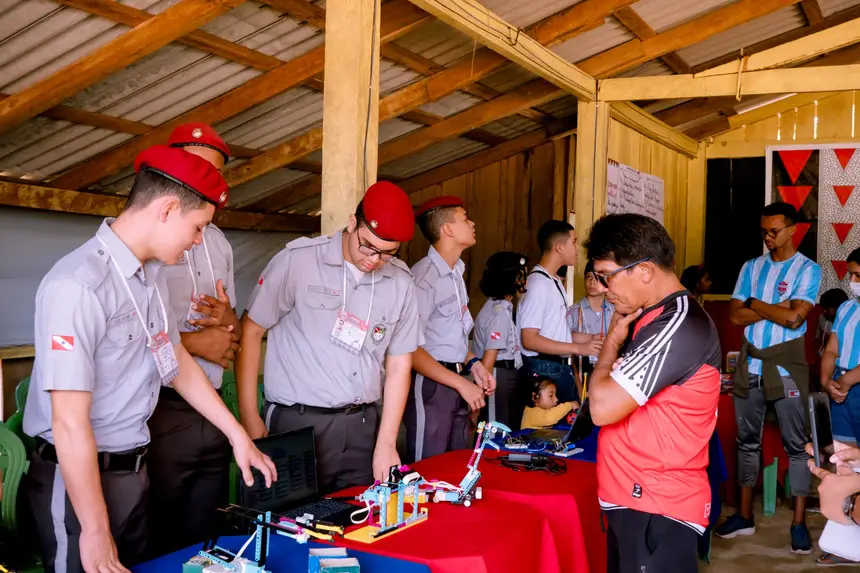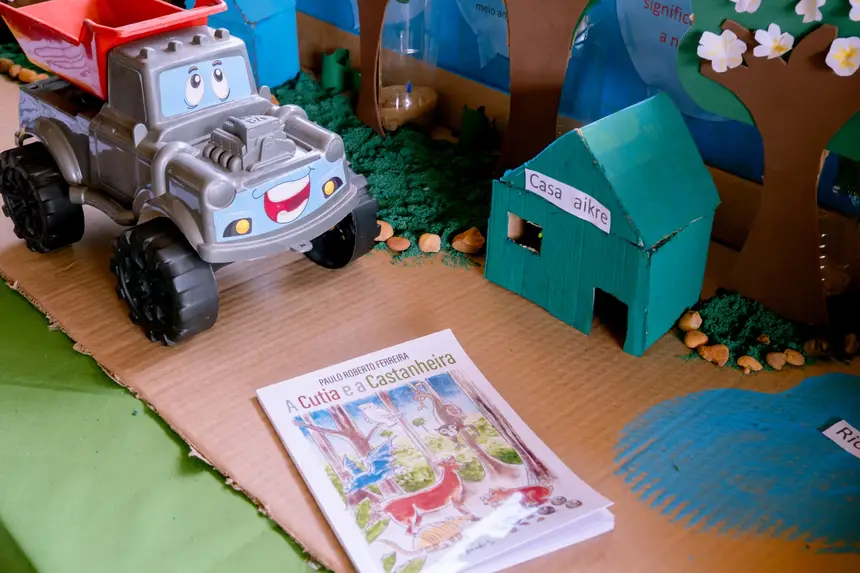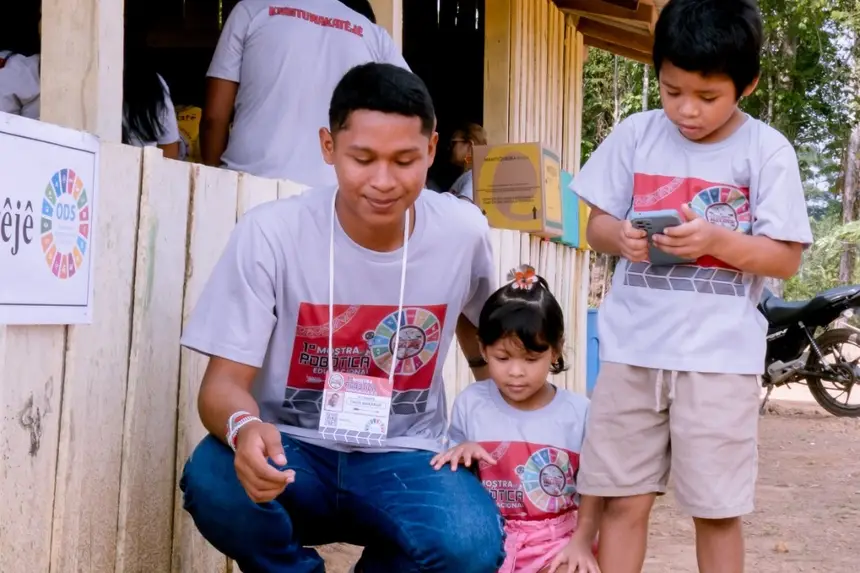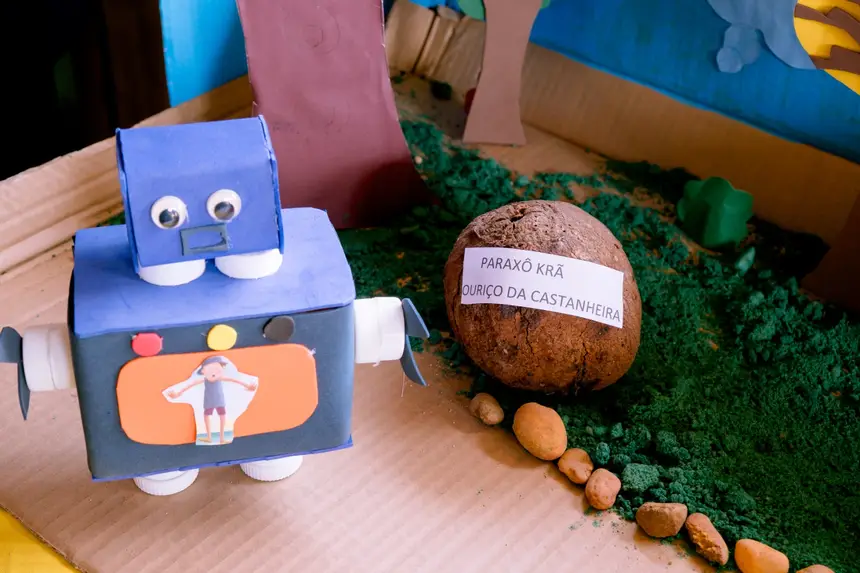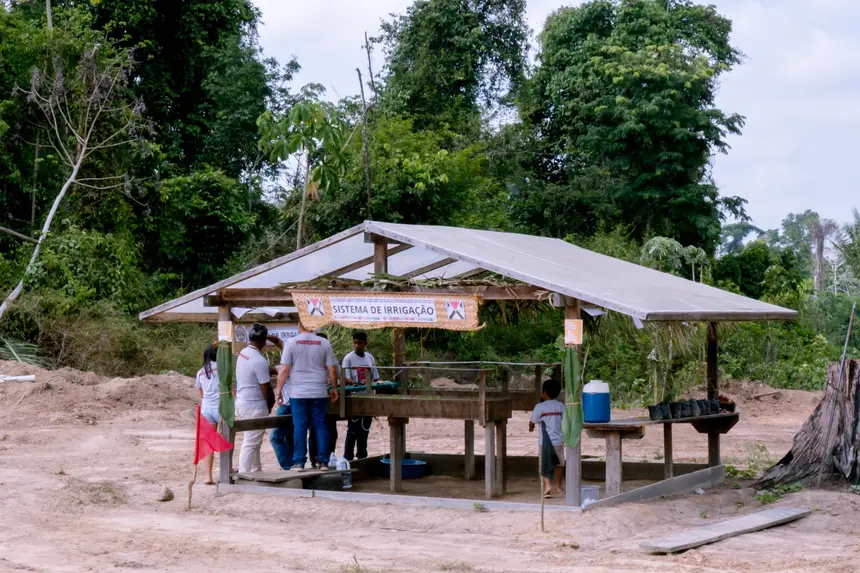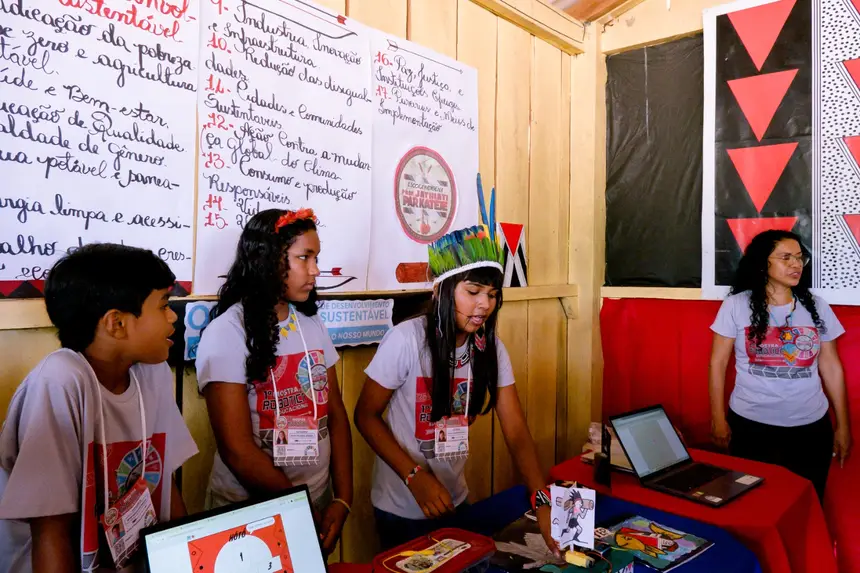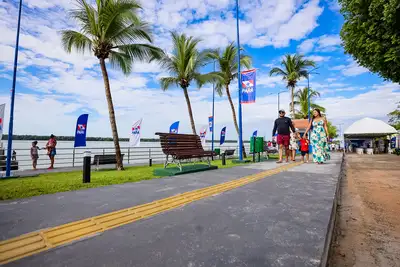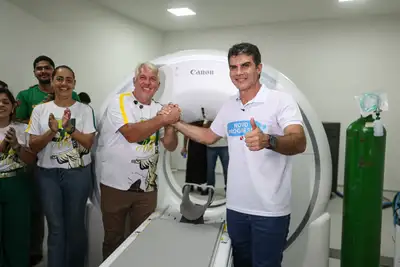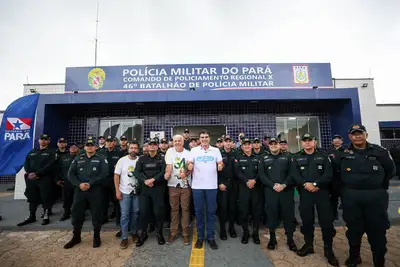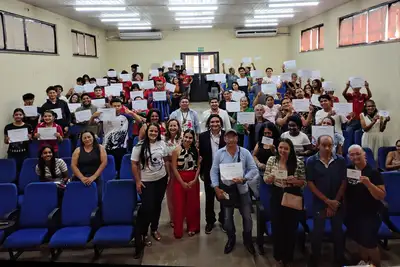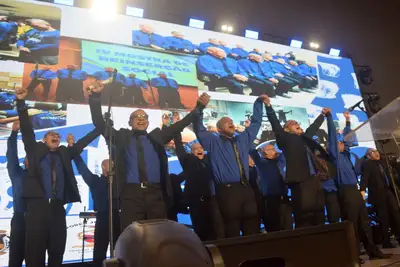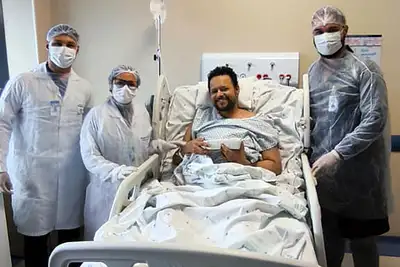Krintuwakatêjê Robotics Combines Technology and Indigenous Tradition in Educational Project
The initiative includes the construction of projects with robotics kits, development of digital games related to sustainable agriculture and the environment
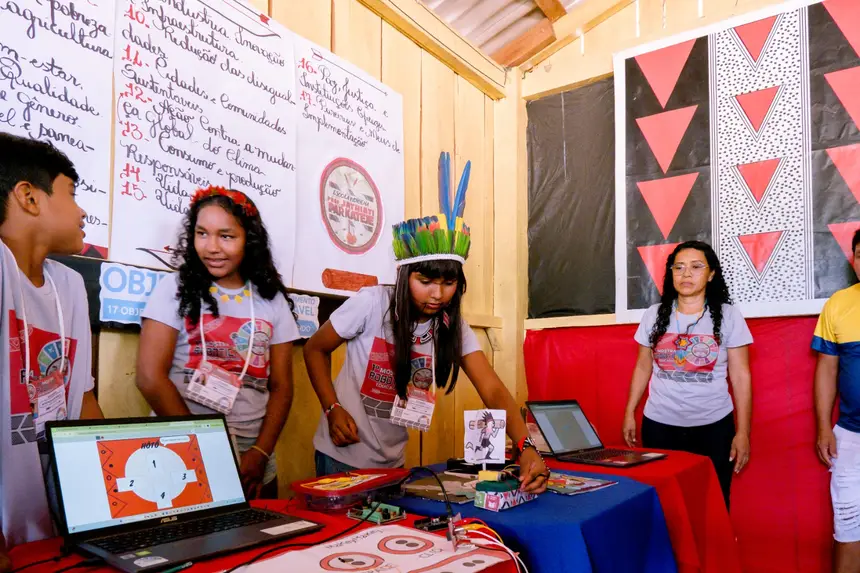
Students from the Jathiati Parkatêjê State Indigenous School, located in the Indigenous Land "Mãe Maria" in the municipality of Bom Jesus do Tocantins, in southeastern Pará, experienced new ways of learning, such as the use of educational robotics as a tool to unite technology, culture, and the Sustainable Development Goals (SDGs), the global goals promoted by the United Nations (UN).
The activities are part of the 'Krintuwakatêjê Project - Knowledge that Connects to Preserve and Innovate' and include the construction of projects with robotics kits, development of digital games, and challenges related to sustainable agriculture, environmental preservation, and reducing inequalities. Additionally, the project values the mother tongue and traditional knowledge, strengthening the bond between school and community.
The initiative was conceived by teacher Ariete Ribeiro, who has the support of a team of teachers and the community, committed to integrating technology, education, and indigenous tradition.
Student Mãrare Kukakrykti talks about the importance of the project that promotes the creation and development of projects that can contribute to the daily life of the community. "Our automatic irrigation system project serves to bring food to our community, and I worked on it with my classmates so that we can produce here and the community can grow with it as well," said the student.
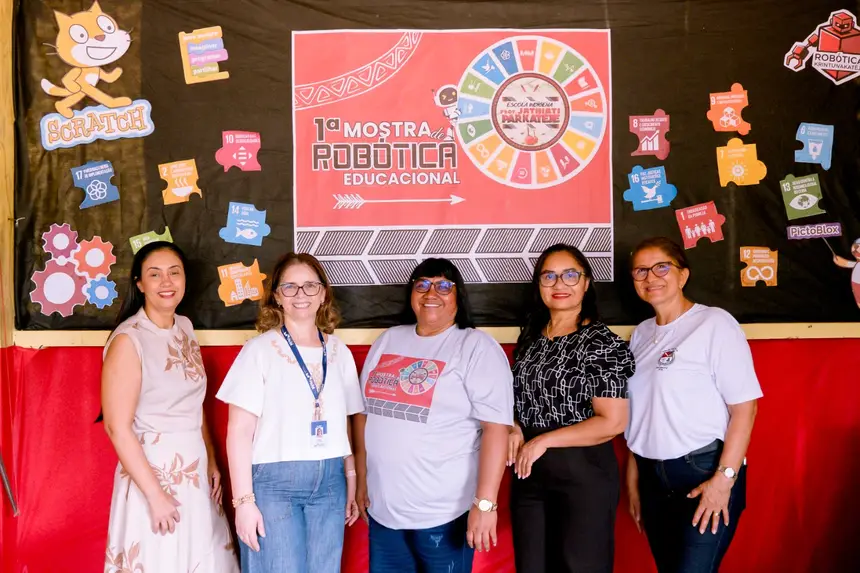
Student Kukakrykre Parkatêjê highlighted the importance of the robotics kits donated by the EJR Robotics team, a partner of the school in Educational Robotics. "EJR Robotics is a partnership with our school and uses recyclable materials in its robots like the Mostrabot and the Krintuwakatêjê Robot created especially for our community," he emphasizes.
Teacher Célia França, from the Center for Innovation and Sustainability in Basic Education (CISEB), an initiative of the State Department of Education (Seduc) that promotes immersion programs in technology, innovation, and sustainability, with an emphasis on curricular learning and the development of new skills, closely monitored the students' interaction and emphasized the emotion and importance of what she considered a cultural exchange.
“I participated, with joy and a heart full of emotion, in the I Exhibition of the Jathiati Parkatêjê Indigenous School. It was an unforgettable morning, marked by much learning and the strength of knowledge, built collectively. The administration, the teachers, and especially our protagonists — the students — put on a true show. They presented prototypes that unite science, tradition, and sustainability. Each initiative was like a beacon shining light and allowing citizens to see how robotics enables dialogue with ancestral knowledge and the Sustainable Development Goals (SDGs), forming young protagonists who learn and teach at the same time,” emphasized the teacher.
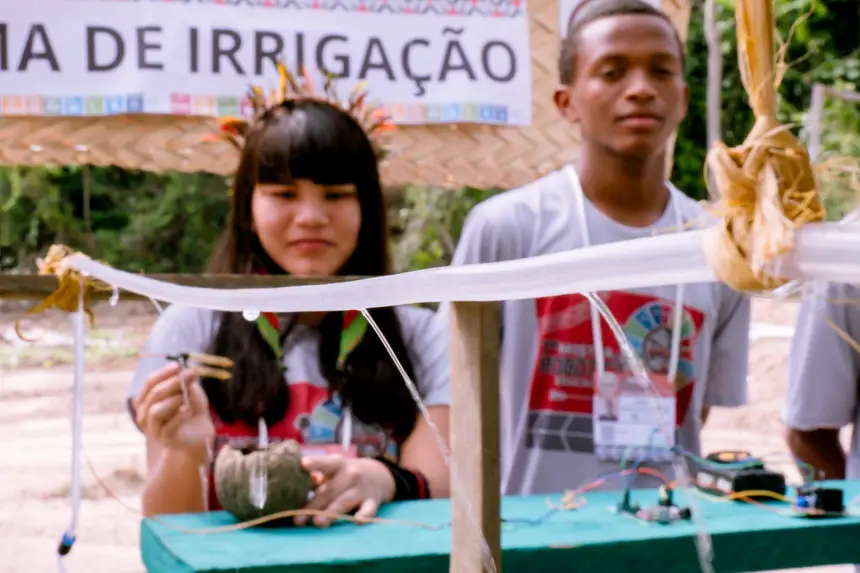
The activities took place on Wednesday (17), and the proposal seeks to make students protagonists in creating solutions for the real challenges of their territory, bringing formal education closer to cultural and community experiences.
The village chief, Rãrãkre Tembé Jathiati Parkatêjê, speaks about the importance of the project for the indigenous community. "We thought about the robotics project when teacher Ariete came up with the idea, and through the robotics project, we can work on various things, such as the sustainable project, our traditions, allied with technology, but always respecting our culture and tradition. So, we brought it because we want to work with the students and further develop this project," she emphasized.
For the director of Innovation at Seduc, Rafael Herdy, closely monitoring the transformative work being done is gratifying. "What I saw here was a true spectacle. The students, true protagonists, demonstrated how science, tradition, and sustainability can walk together. They created prototypes that unite the best of technology with ancestral wisdom."
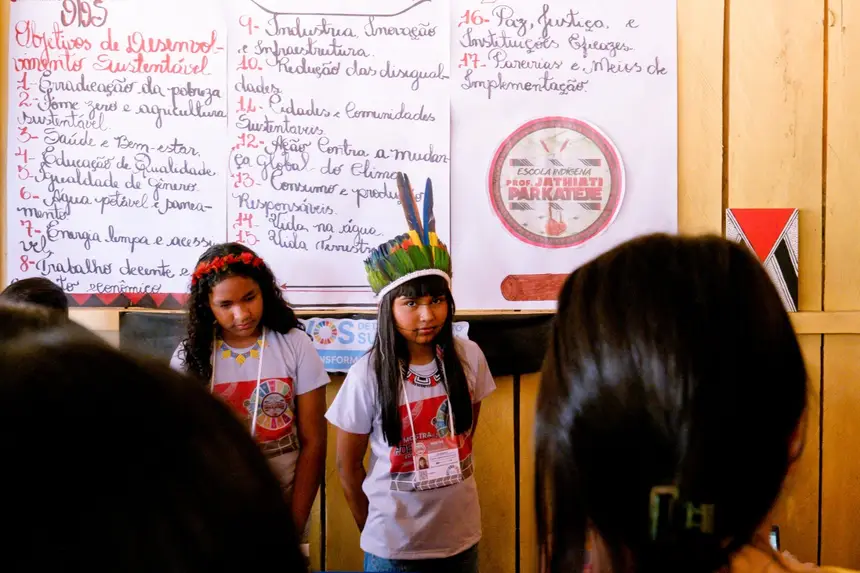
"What we saw at the Jathiati Parkatêjê School is proof that technology, far from erasing roots, can be a powerful bridge to strengthen culture and ancestral knowledge. Robotics has become a tool to dialogue with the past, build the present, and project a sustainable future for the community,” emphasized Rafael.
During the event coverage, the regional education leader, Magno Barros, highlighted the role of innovation in the educational process. "It is essential to show that technology can be a bridge to capture students' interest while strengthening the culture of the indigenous people. The school needs to dialogue with the future without losing its roots," he stated.


